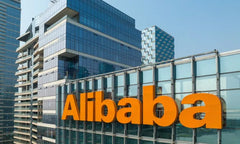Frank and Oak Confirms Plans to Close All U.S. Stores Amid Liquidation Process
Table of Contents
- Key Highlights
- Introduction
- Accelerated Closures Due to Tariff Uncertainty
- Unified Commerce Group’s Financial Dilemma
- The Changing Landscape of Retail
- Consumer Adaptation to Online Shopping
- FAQ
Key Highlights
- Store Closures: Frank and Oak will close all U.S. stores by April 2025, accelerated due to tariff uncertainties impacting cross-border operations.
- Canadian Closures: The retailer will also shut down 10 stores in Canada by May 2025, conforming to bankruptcy guidelines.
- Financial Struggles: Parent company Unified Commerce Group is seeking a buyer after filing for creditor protection, burdened by $71 million in debt.
Introduction
In a decision that echoes through the fashion retail landscape, Frank and Oak announced that it will shutter all its U.S. storefronts by April 2025. This development, which was accelerated due to uncertainties surrounding tariffs and customs, points to larger challenges facing the retailer and, indeed, the industry at large. As rising costs and economic volatility take their toll, the Montreal-based brand, known for its sustainable fashion ethos, is navigating an increasingly precarious situation.
Founded in 2012 by Ethan Song and Hicham Ratnani, Frank and Oak stood out with its commitment to minimalism and sustainability, attracting a loyal customer base. However, the repercussions of the COVID-19 pandemic and competition within the fast-evolving fashion sector have forced the company into a difficult position. As the impending closures loom, the implications of this decision extend beyond the closure of physical stores; they signify a significant shift in consumer behavior, retail strategies, and supply chain dynamics.
Accelerated Closures Due to Tariff Uncertainty
Frank and Oak’s leadership cited rising uncertainties related to tariffs and customs as primary catalysts for the decision to truncate their U.S. operational timeline. In their announcement, the company elaborated on the complications posed by ongoing changes in international trade policies, which made continuing cross-border trade increasingly complex and costly.
“Shipments across the border have become unduly burdensome and unpredictable, making it impractical to maintain our U.S. operations,” the company stated. These pressures not only affect scheduling and inventory management but also hinder the retailer's ability to deliver competitive pricing, a crucial aspect of consumer retention in the retail space.
As outlets commence their clearance sales, remaining inventory is expected to be sold at significant markdowns, giving consumers a last chance to purchase Frank and Oak products before the doors close.
The Canadian Context
While U.S. operations are winding down, Frank and Oak is also preparing for profound changes in Canada. The company has announced plans to close 10 stores nationwide by the end of May 2025. These closures are part of a larger restructuring initiative predicated on the Canadian Bankruptcy and Insolvency Act—a step taken after filing for creditor protection in December 2024.
This transitional phase reflects not only a necessity to stabilize financially but a strategic pivot to remain viable in an increasingly competitive market. Adaptation appears to be a necessity as the company re-evaluates its business model through a lens of sustainability and consumer engagement.
Unified Commerce Group’s Financial Dilemma
The parent company, Unified Commerce Group (UCG), has been grappling with significant financial strain, reporting a staggering $71 million in debt. UCG’s CEO, Dustin Jones, highlighted that, despite prior growth, the firm has found recovery increasingly elusive amid pandemic-induced losses. “We’ve learned that resilience lies not just in growth but in agility,” Jones remarked during a press briefing.
The financial complexities facing UCG demand a transition plan that preserves brand value during negotiations to find a buyer. Potential interest in acquiring the brand appears robust, at least at the outset, yet the lack of confirmed bidders leaves the company in a state of uncertainty. Ongoing discussions with creditors and stakeholders underline the urgency for clarity and stability.
Historical Significance of Frank and Oak
To understand the impact of Frank and Oak’s closures, it helps to delve into the brand's past. Launched at a time when consumers were beginning to prioritize sustainability alongside style, Frank and Oak positioned itself uniquely within the market. The brand's focus on eco-conscious materials and ethical manufacturing practices resonated with a generation that values transparency in its consumption choices.
However, the retail landscape is evolving rapidly, and competitors are emergently redefining standards for what consumers expect from fashion brands. The COVID-19 pandemic further accelerated shifts away from traditional retail practices, forcing brands to adapt swiftly to changing consumer preferences and economic pressures.
The Changing Landscape of Retail
As the phenomenon of direct-to-consumer (DTC) models surged in popularity, even established brands faced challenges in maintaining market share. Brick-and-mortar stores have long been a staple in retail, but as e-commerce expands its reach, many retailers struggle to adapt.
The declines attributed to physical retail are not just a Frank and Oak issue—they are emblematic of a broader trend within the retail landscape. This trend highlights that, particularly in instances where tariffs and customs create operational challenges, brands must be agile if they hope to succeed.
Economic Implications
The closure of Frank and Oak's stores reverberates beyond the immediate loss of jobs and retail experiences. It raises questions about the sustainability of fashion brands that emphasize eco-conscious values but still engage in traditional retail practices. Consumers struggling with economic uncertainty may find their purchasing patterns shifting as disposable income becomes increasingly constrained.
Experts observe that this move could force other retailers to reconsider their operational frameworks. “The decisions made by companies like Frank and Oak are critical indicators for the industry,” said retail analyst Marie Hingston. “They encourage a broader reassessment of how retail can adapt to 21st-century realities.”
Consumer Adaptation to Online Shopping
As Frank and Oak closes its physical locations, it will maintain its online presence to facilitate ongoing retail operations. The transition to a more digital-centric model echoes the practices adopted by many retailers in response to subsequent consumer behaviors during the pandemic. Online sales have largely replaced foot traffic, and companies that can deliver a seamless online shopping experience stand to thrive.
Moreover, Frank and Oak's direct-to-consumer approach will likely need to harness data analytics to fine-tune inventory levels and personalize customer outreach, ensuring that they remain competitive in a saturated e-commerce environment.
Final Thoughts on Sustainability
The evolution of Frank and Oak illuminates the intricate balance between sustainable practices and the realities of retail economics. Established in a time of heightened consumer awareness regarding environmental issues, the brand’s philosophy might need to evolve alongside its operational strategies to cater to changing consumer needs while maintaining its core values.
In this rapidly shifting environment, the task ahead for Unified Commerce Group will be to find equilibrium: navigating their restructuring efforts while promoting the sustainability ethos that initially drew in their loyal customer base.
FAQ
Why is Frank and Oak closing all its U.S. stores?
Frank and Oak is closing its U.S. stores due to growing uncertainties surrounding tariffs and customs, which made cross-border operations increasingly unfeasible.
What is the timeline for store closures?
All U.S. stores are set to close by the end of April 2025. In Canada, 10 stores will close by the end of May 2025.
How is Frank and Oak's parent company handling its financial struggles?
Unified Commerce Group is actively seeking potential buyers and has filed for creditor protection. The company reports $71 million in debt.
What does this mean for the employees?
While specific details concerning employee layoffs have yet to be disclosed, the closure of stores will inevitably result in job losses.
Will Frank and Oak still operate online?
Yes, Frank and Oak will continue its online operations during the liquidation process, allowing customers to make purchases while the retail locations close.
What does the future hold for Frank and Oak?
Pending sale negotiations and operational restructuring, Frank and Oak could focus on enhancing its digital presence and possibly recalibrating its business practices to align with the evolving retail landscape.
POWER your ecommerce with our weekly insights and updates!
Stay aligned on what's happening in the commerce world
Email Address
Handpicked for You


27 June 2025 / Blog
Alibaba Partners with Balance to Transform B2B Payment Solutions for U.S. Businesses
Read more
